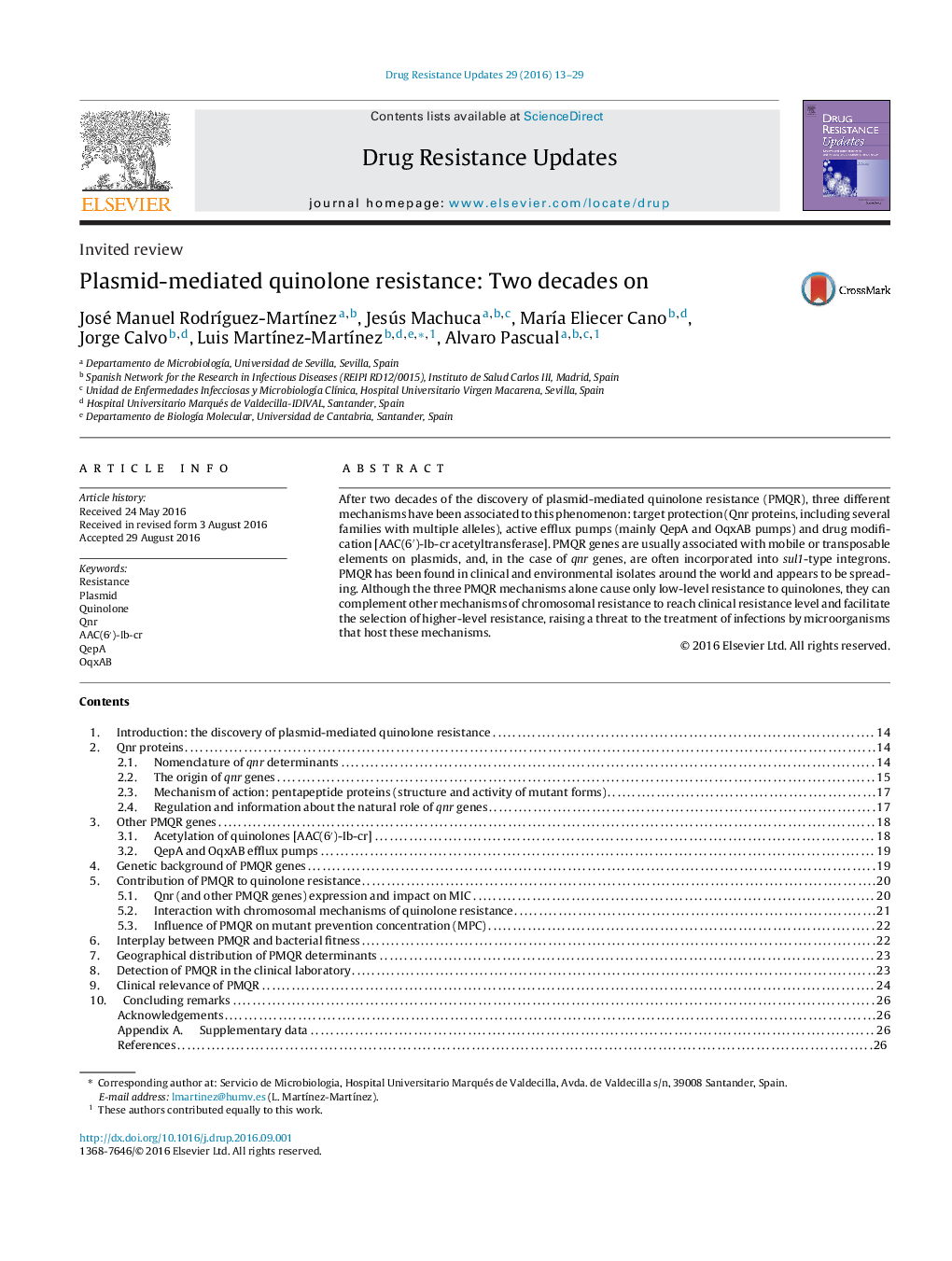| Article ID | Journal | Published Year | Pages | File Type |
|---|---|---|---|---|
| 8436641 | Drug Resistance Updates | 2016 | 17 Pages |
Abstract
After two decades of the discovery of plasmid-mediated quinolone resistance (PMQR), three different mechanisms have been associated to this phenomenon: target protection (Qnr proteins, including several families with multiple alleles), active efflux pumps (mainly QepA and OqxAB pumps) and drug modification [AAC(6â²)-Ib-cr acetyltransferase]. PMQR genes are usually associated with mobile or transposable elements on plasmids, and, in the case of qnr genes, are often incorporated into sul1-type integrons. PMQR has been found in clinical and environmental isolates around the world and appears to be spreading. Although the three PMQR mechanisms alone cause only low-level resistance to quinolones, they can complement other mechanisms of chromosomal resistance to reach clinical resistance level and facilitate the selection of higher-level resistance, raising a threat to the treatment of infections by microorganisms that host these mechanisms.
Related Topics
Life Sciences
Biochemistry, Genetics and Molecular Biology
Cancer Research
Authors
José Manuel RodrÃguez-MartÃnez, Jesús Machuca, MarÃa Eliecer Cano, Jorge Calvo, Luis MartÃnez-MartÃnez, Alvaro Pascual,
